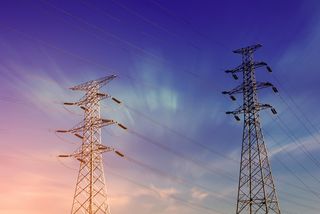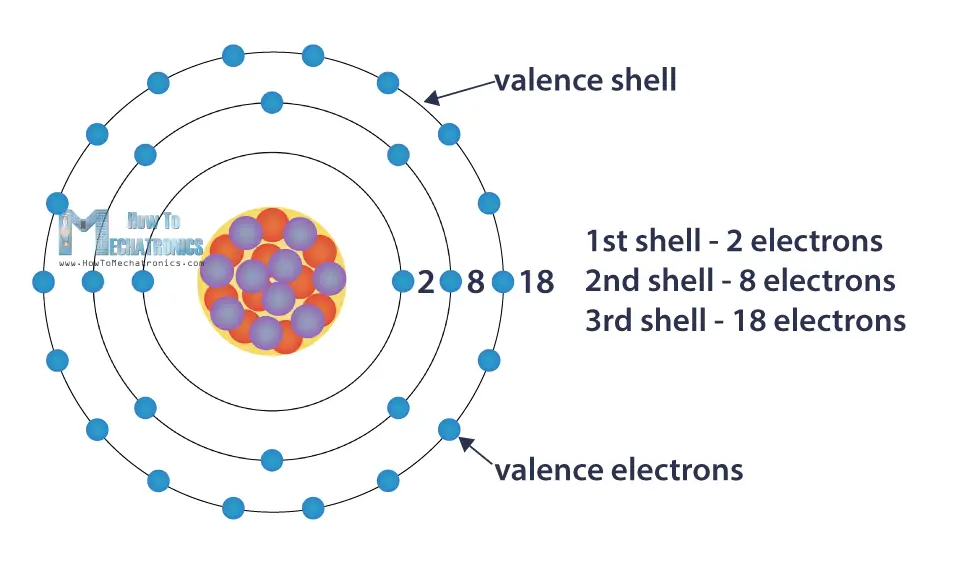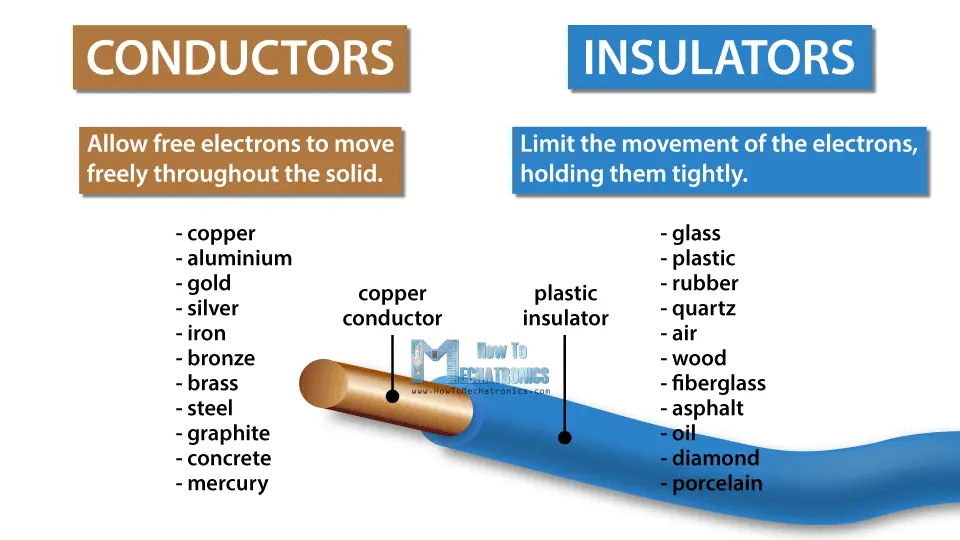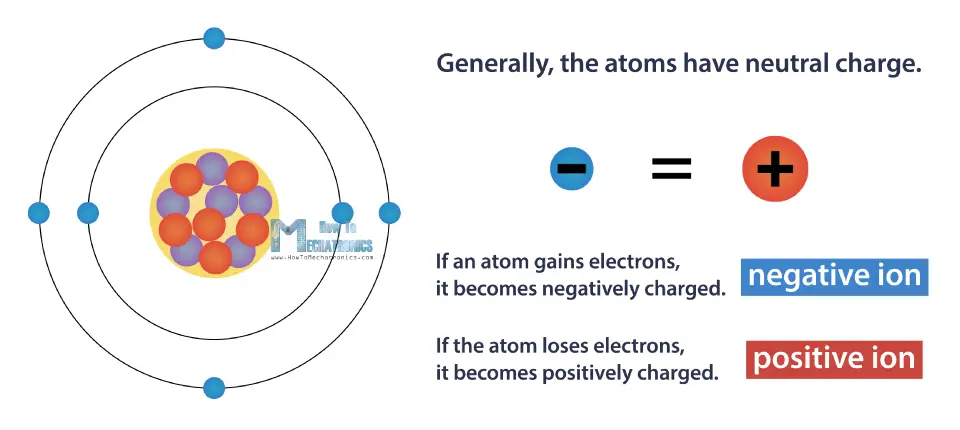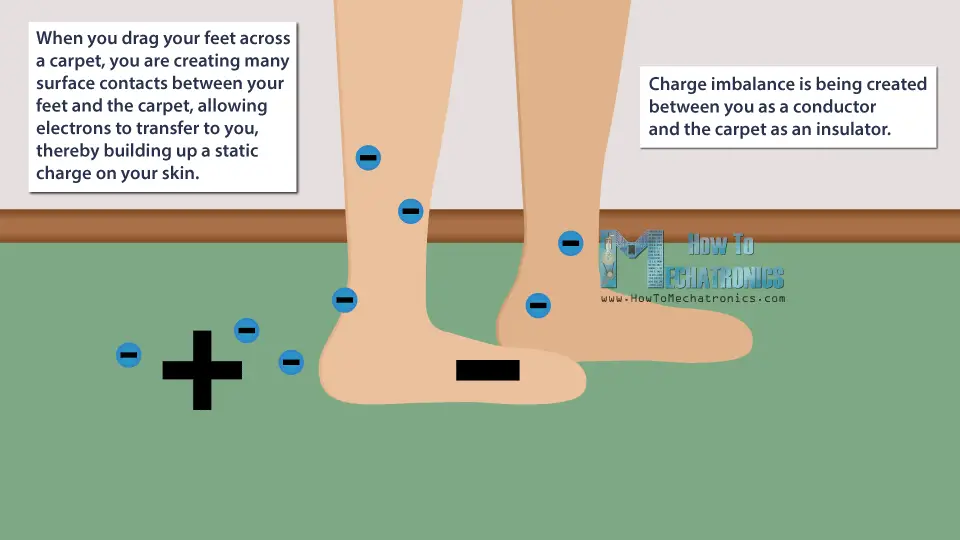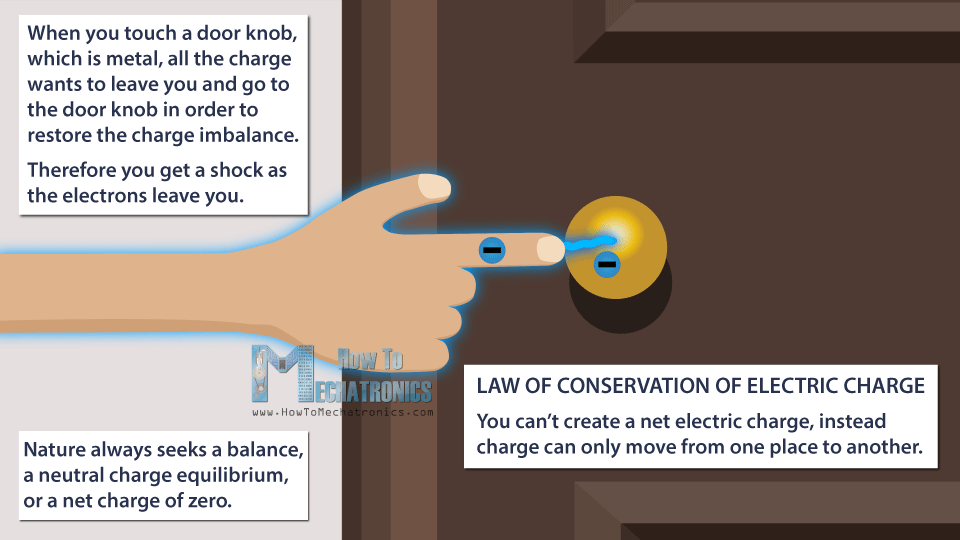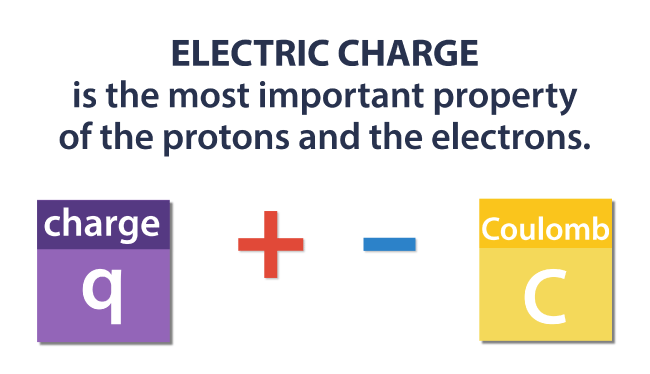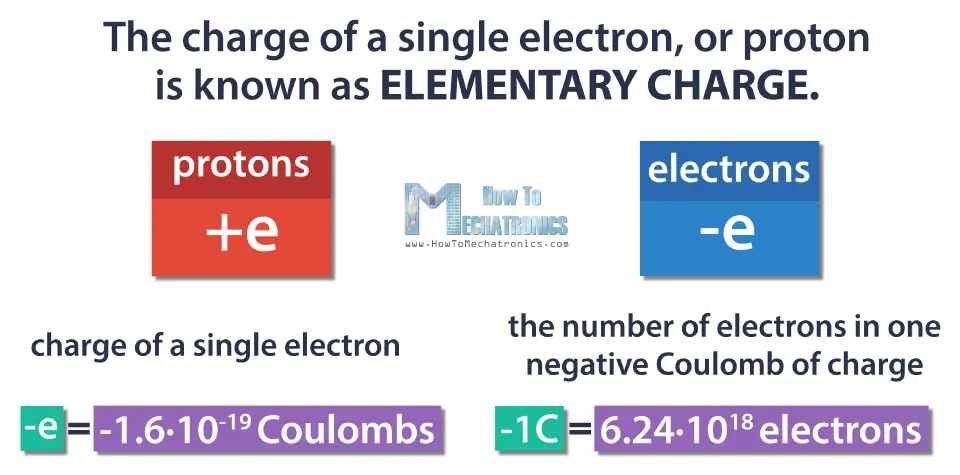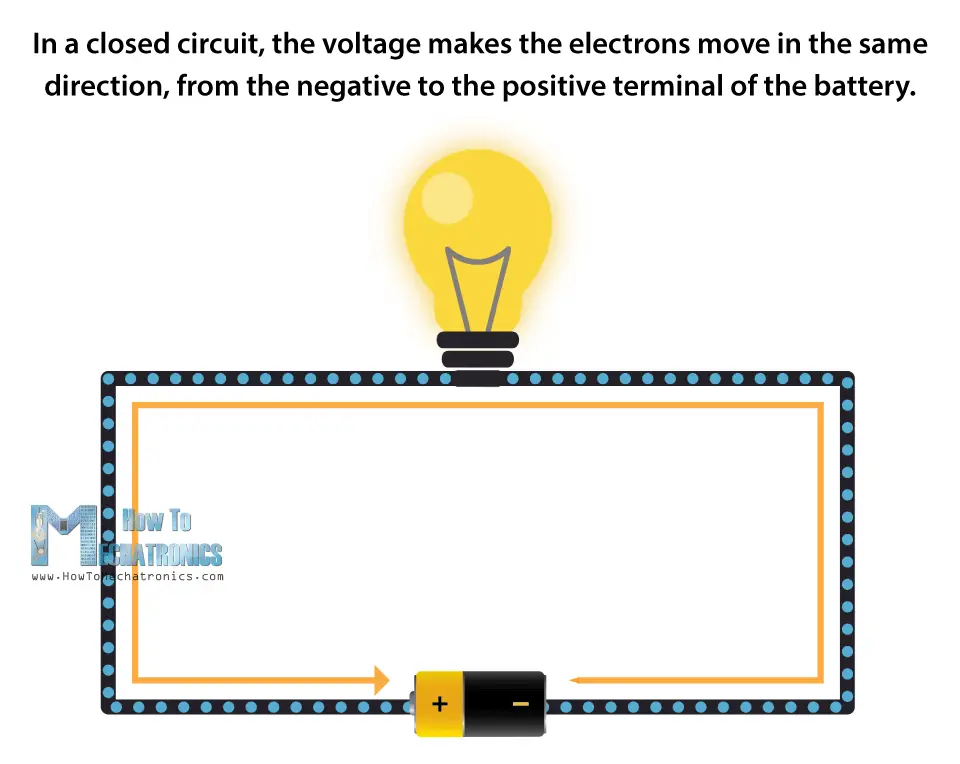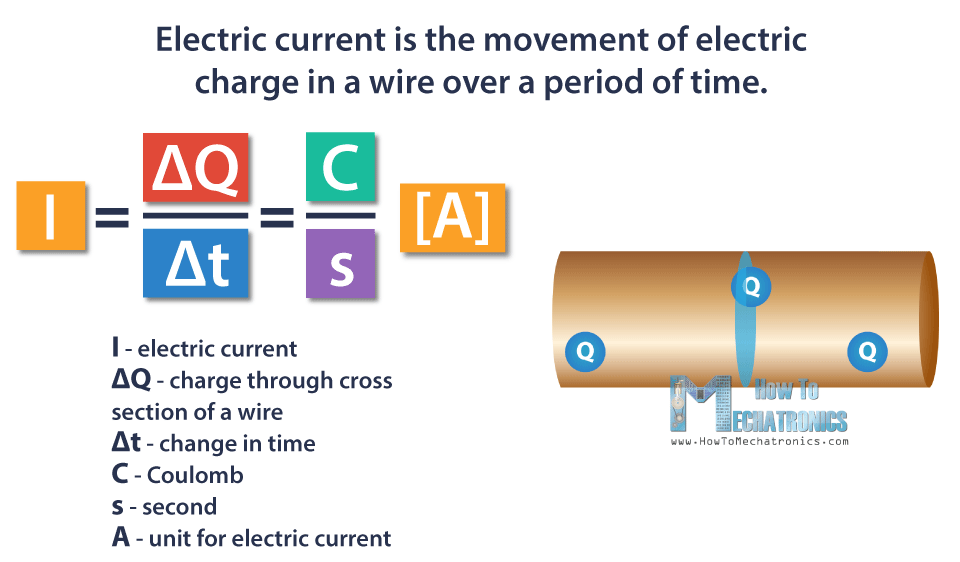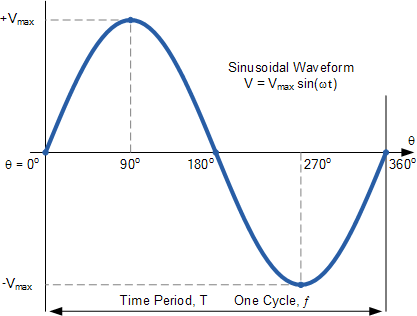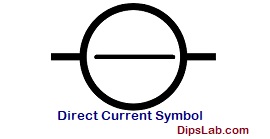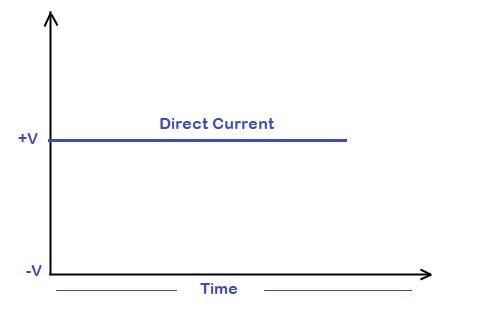How electric current works
How electric current works
What Is Electric Current?
By Jim Lucas published 1 March 16
Electric current is electric charge in motion. It can take the form of a sudden discharge of static electricity, such as a lightning bolt or a spark between your finger and a ground light switch plate. More commonly, though, when we speak of electric current, we mean the more controlled form of electricity from generators, batteries, solar cells or fuel cells.
Most electric charge is carried by the electrons and protons within an atom. Protons have positive charge, while electrons have negative charge. However, protons are mostly immobilized inside atomic nuclei, so the job of carrying charge from one place to another is handled by electrons. Electrons in a conducting material such as a metal are largely free to move from one atom to another along their conduction bands, which are the highest electron orbits. A sufficient electromotive force (emf), or voltage, produces a charge imbalance that can cause electrons to move through a conductor as an electric current, according to Serif Uran, a professor of physics at Pittsburg State University.
While it is a bit dicey to compare electric current to the flow of water in a pipe, there are some similarities that might make it somewhat easier to understand. We can think of the flow of electrons in a wire as the flow of water in a pipe, according to Michael Dubson, a professor of physics at the University of Colorado Bolder. The caveat is that, in this case, the pipe is always full of water. If we open the valve on one end to let water into the pipe, we don’t have to wait for that water to make its way all the way to the end of the pipe. We get water out the other end almost instantaneously because the incoming water pushes the water that’s already in the pipe toward the end. This is what happens in the case of electrical current in a wire. The conduction electrons are already present in the wire; we just need to start pushing electrons in one end, and they start flowing at the other end almost immediately.
According to the Georgia State University’s HyperPhysics website, the actual speed of an electron in a wire is on the order of a few million meters per second, but it doesn’t travel straight down the wire. It bounces around nearly at random and only makes progress at a few millimeters per second. This is called the electron’s drift velocity. However, the transmission speed of the signal, when electrons start being pushed out the other end of the wire after we flip the switch, is nearly the speed of light, which is about 300 million meters per second (186,000 miles per second). In the case of alternating current, where the current changes direction 50 or 60 times per second, most of the electrons never make it out of the wire.
Charge imbalances can be created in a number of ways. The first known way was to create a static charge by rubbing two different materials together, such as rubbing a piece of amber with animal fur. A current could then be created by touching the amber to a body with less charge or to ground. However, this current had very high voltage, very low amperage, and lasted for only a fraction of a second, so it could not be made to do any kind of useful work.
Direct current
The next known way to create a charge imbalance was the electro-chemical battery, invented in 1800 by Italian physicist Alessandro Volta for whom the unit for electromotive force, the volt (V) is named. His «voltaic pile» consisted of a stack of alternating zinc and copper plates separated by layers of cloth soaked in salt water and produced a steady source of direct current (DC). He and others improved and refined his invention over the next few decades. According to the National Museum of American History, «batteries attracted the attention of many scientists and inventors, and by the 1840s were providing current for new electrical devices like Joseph Henry’s electromagnets and Samuel Morse’s telegraph.»
Other DC sources include fuel cells, which combine oxygen and hydrogen into water, and produce electrical energy in the process. Oxygen and hydrogen can be supplied as pure gasses or from air and a chemical fuel such as alcohol. Another source of DC current is the photovoltaic orsolar cell. In these devices photonic energy from sunlight is absorbed by electrons and converted into electrical energy.
Alternating current
Most of the electricity that we use comes in the form of alternating current (AC) from the electric power grid. Alternating current is produced by electric generators that operate on Faraday’s Law of Induction, by which a changing magnetic field can induce an electric current in a conductor. Generators have rotating coils of wire that pass through magnetic fields as they turn. As the coils rotate, they open and close with respect to the magnetic field and produce an electric current that reverses direction every half turn. The current goes through a complete forward-and-reverse cycle 60 times each second, or 60 hertz (Hz) (50 Hz in some countries). Generators can be powered by steam turbines heated by coal, natural gas, oil or a nuclear reactor. They can also be powered by wind turbines or water turbines in hydroelectric dams.
From the generator, the current goes through a series of transformers, where it is stepped up to a much higher voltage for transmission. The reason for this is that the diameter of the wires determines the amount of current, or amperage, they can carry without overheating and losing energy, but the voltage is limited only by how well the lines are insulated from the ground. It is interesting to note that the current is carried by only one wire and not two. The two sides of direct current are designated as positive and negative. However, because the polarity of AC changes 60 times per second, the two sides of alternating current are designated as hot and ground. In long-distance power transmission lines, the wires carry the hot side, and the ground side travels through the Earth to complete the circuit.
Since power equals voltage times amperage, you can send more power down the line at the same amperage by using higher voltage. The high voltage is then stepped down as it is distributed through a network of substations until it gets to the transformer near your house, where it is finally stepped down to 110 V. (In the United States, wall sockets and lights run on 110 V at 60 Hz. In Europe, nearly everything runs on 230 V at 50 Hz.)
Once the current gets to the end of the line, most of it is used one of two ways: either to provide heat and light through electrical resistance, or mechanical motion through electrical induction. There are a few other applications — fluorescent lights and microwave ovens come to mind — that operate on different principles, but the lion’s share of power goes to devices based on resistance and/or inductance. A hair dryer, for example, uses both at the same time.
This brings us to an important feature of electric current: it can do work. It can light your home, wash and dry your cloths, and even raise your garage door at the flip of the switch. What is becoming more and more important, though, is the ability for electric current to convey information, most notably in the form of binary data. Although the Internet connection to your computer uses only a tiny fraction of the electric current of, say, an electric heater, it is becoming more and more important to modern life.
Electric Current
There existed a time when no electronic devices were available, devices like laptop, cellphones, there even was a time when humans did not have a fan to cover the heat, light in the house to see in the dark, but in today’s time, People have all these in their hands’ reach, all this was possible because of one invention — “Electricity”. Electricity is the flow of electric charges when a potential difference is available at the ends of the wire. It will not be incorrect to say that Humans mostly rely on Electricity not only for easy living, but it has become a way of life. From Rockets to Trains to Factories to our home appliances, everything works on electricity.
What is Electric Current?
The flow of electric charges is known as electric current. Earlier when the electrons were not discovered, it was said that electric current is the flow of positive charges, The flow of current and the current itself is generated due to the movement of negative charges (electrons), electrons flow from negative terminal to positive terminal (lower to higher potential) which is known as the Electron flow while current flows from positive terminal to negative terminal (Higher to Lower Potential) which is also known as the Conventional current flow.
The best way to imagine current flowing in a circuit is by imagining flow of liquid inside a pipe from a higher point to lower, the liquid represents current, the difference in the heights of the extreme end of the pipe represents the difference in potential causing the current to flow if the pipe is twisted at some point the flow of the liquid will slow down, that represents the resistance offered by the conductor that reduces the current.
Formula for Electric current
The electric current can be represented as the rate of flow of electric charge (q), Electric charge comes under the basic units like mass, length, and so on. The unit of Electric charge is Coulomb and therefore, the unit of Electric current becomes Coulomb/sec.
Unit of Electric Current
The Unit of electric Current is Amperes (A) or Coulomb/second.
Electromotive Force
Normally, in a conductor, Electrons are present, and they are not stationary, they keep on moving in random directions, and due to their randomness, the overall displacement of all electrons becomes zero and hence, no current is produced. In order to produce current, some external force is required to align electrons in one direction and make them move in that one direction, the external force is known as Electromotive Force and is also famous as EMF. It is nothing but the voltage applied to produce current.
Properties of Electric Current
Ohm’s Law
The German physicist Georg Simon Ohm stated that the current flowing in a wire is directly proportional to the voltage drop across it. According to Ohm’s Law, the current flowing through a wire is directly proportional to the voltage applied at the ends of the wire provided that the temperature and conductivity remains the same.
Upon removing the proportionality sign, a proportionality constant is introduced known as Resistance.
V = RI
V= Voltage at the ends of conductor
R= Resistance offered by the conductor
I= Current through the wire.
Effect of Electric Current
There are different effects that can be noticed due to the flow of electric current in a wire, for example, when current passes through a resistor, the resistor has a property of resisting which does not let the whole current pass but since energy can neither be created nor destroyed, it is converted in heat energy and is released in the form of heat, this effect is called as the heating effect of current. Similarly, we have magnetic and chemical effects of electric current.
Chemical effect of Electric Current
When Electric current is passed through a which is conducting in nature, the solution breaks in its respective ions, and effects are seen visibly. The major effects that are prominent,
Magnetic effect of Electric current
Electric current is nothing but the motion of electrons, and it is known, when charges are stationary, they create Electric Field but when charges are in motion, they create a Magnetic field. When current is passed through a wire and a metallic sheet is placed there with a needle, the needle will be deflected due to the presence of a magnetic field which is produced by the electric current. One of the biggest applications of the Magnetic effect of electric current is Electromagnets, they are formed with the help of passing current.
Heating effect of electric Current
When current flows in a conductor, heat energy is produced and released from the conductor and the amount of effect depends upon the resistance offered by the conductor. If the conductor has to offer high resistance, it simply means that it shall not allow most of the current to flow but due to the conservation of energy (energy can neither be created nor destroyed), current that could not pass is converted into heat and the phenomenon is known as Heating effect of current. The formula for heat energy is given by,
Where, H= Heat energy released
I= current flowing in the conductor
R= Resistance offered by the conductor
T= Time for which the current was flowing in the conductor.
Applications of heating effect of current involve Electric Irons, Electric Heaters, filament lamps, Electric kettles, etc.
Sample Problems
Question 1: In a conductor, 10 Coulombs of charge flows for 5 seconds, determine the current produced?
Solution:
The current in a circuit is given by,
Therefore, 2 amperes of current flows in the circuit.
Question 2: Answer the given questions,
1. Which material is a better conductor of electricity — Iron or Silicon?
2. What is the best conductor of electricity?
Answer:
1. Iron is a better conductor of electricity while silicon is a semiconductor.
2. Silver is known to be the best conductor of electricity.
Question 3: In the circuit given below, Find the current flowing through the circuit.
Solution:
In the figure provided, it is clear that there are two resistances, and they are in series. When two or more than two resistances are attached in series in a circuit, the overall resistance becomes equal to the sum of individual resistances present in the circuit.
Question 4: Why Silver is not used more often as a conductor in daily usage?
Answer:
Silver is known to be the best conductor of electricity but is still not preferred to be used in daily usage as a conductor because of its unavailability and the fact that silver is very expensive. Instead, conductors like copper which are easily available are used.
Question 5: What is the Heat energy produced when 2 amperes of current is flowing in a circuit for 5 seconds having an overall resistance in the circuit of 4 ohms?
Solution:
The Heat energy produced is given by,
Therefore, 80 Joules is produced in the circuit.
What is Electric Charge and How Electricity Works
In this lecture we will learn what electric charge and current is and how electricity works. You can watch the following video or read the written tutorial below.
Structure of an Atom
To understand electricity, we need to start with the atom. Matter is made of atoms. We are made of atoms. Everything in the Universe is made of atoms.
An atom cannot be seen with a naked eye, so we’ll use a simplified model which can help us understand the structure of the atom. This is called the Bohr model.
In the center of the atom there is a nucleus, which consists of neutrons which have no charge, and protons which have a positive charge. Also, there are negatively charged electrons orbiting around the nucleus.
The number of neutrons, protons and electrons an atom has can tell us which material it is.
Shells
The protons and neutrons are positioned in the center of the atom, while the electrons circulate around the nucleus in а constant motion.
The electrons are much lighter than the protons in the nucleus, and they can move very easy with almost the speed of light.
They move around the nucleus in circular orbits, or shells. Each shell can contain only a particular number of electrons: The first shell can hold 2 electrons, the second shell 8 electrons, the third shell can hold up to 18, and so on.
The shells are filled up with electrons from the inside out. The number of electrons in the last, outer shell determines the reactivity of the atom, or its tendency to form chemical bonds with other atoms. When that shell is full, the atom is stable and least reactive.
The outer shell is known as the valence shell, and the electrons found in it are called valance electrons. Some materials in this shell have loosely bound electrons which allows them to flow from one atom to another.
Conductors and Insulators
These moving electrons are called free electrons. How easy it is for electrons to move around depends on the material.
Materials can be either conductors or insulators. Materials that are conductors, like most metals, allow free electrons to move freely throughout the solid, while insulators, like plastic or glass, limit the movement of the electrons, holding them tightly.
Electric Charge
Generally, the atoms have neutral charge, which means they have the same number of electrons and protons. In other words, they have a net electric charge equal to zero. This is the lowest possible energy level of the atom, or so called the ground state.
However, we can change the atom’s charge, by causing it to gain or lose electrons. If an atom gains electrons, it becomes negatively charged, and opposite, it the atom loses electrons, it becomes positively charged. Charged atom is called positive or negative ion.
Static Electricity
For example, when you drag your feet across a carpet, you are creating many surface contacts between your feet and the carpet, allowing electrons to transfer to you, thereby building up a static charge on your skin.
Instead of you and the carpet having a neutral charge, a charge imbalance is being created between you as a conductor and the carpet as an insulator.
Then, when you touch a door knob, which is metal, all the charge wants to leave you and go to the door knob in order to restore the charge imbalance. Therefore you get a shock as the electrons leave you.
Nature always seeks a balance, a neutral charge equilibrium, or a net charge of zero. During this process we didn’t create new charges. The overall charge between the objects is still zero.
This leads us to the law of conservation of electric charge, which says that you can’t create a net electric charge, instead charge can only move from one place to another.
Electric charge in fact is the most important property of the protons and the electrons.
The charge is denoted by “q”, and the unit of charge is Coulomb. Objects can be positively or negatively charged, hence “q” can have both positive and negative values.
The charge of a single electron, or proton is known as elementary charge, and is denoted with a lowercase “e”. Protons have a charge of positive e, and electrons of negative e.
Electric Current
The flow of electrons is what forms an electric current.
If we look inside a piece of copper wire, there are atoms that easily exchange electrons. These electrons are able to move from one atom to another in any direction. If we make a closed circuit, by connecting the copper wire with a power source, like a battery, then the voltage will make the electrons move in the same direction, from one terminal of the battery to the other, or from the negative to the positive of the power source.
In a closed circuit, the voltage makes the electrons move in the same direction, from the negative to the positive terminal of the battery.
If we add a light bulb to the closed circuit, the electrons will have to pass through it in order to get to the other terminal, thus producing a light.
Electric current is the movement of electric charge in a wire over a period of time. The symbol for electric current is I.
One Coulomb of charge passing through a piece of wire over one second is equal to one Ampere of current. Ampere is the unit of measurement of the electric current.
That’s all for this tutorial. In the next Basic Electronics tutorial we will talk about Coulomb’s Law.
I hope you enjoyed this tutorial and learned something new. Feel free to ask any question in the comments section below.
Current Electricity: Definition, Types, Formulas, Generation, Working & Examples
Current and Electricity are the outcomes of the movement of electrons. In this article, we are going to learn about the fundamentals of current and electricity. Atoms are the fundamental particles of the known universe. We had already learned about electrons, protons and neutrons are the subatomic particles of an atom. Moreover few electrons are allowed to move freely from one atom to another and considered free electrons.
An electron carries a negative charge on it with the magnitude of 1.6 x 10-19 Coulomb, whereas the proton which stays at the centre of an atom carries the positive charge with the magnitude same as of electrons. The protons do not move from one place to another and are considered fixed. It is an electron that keeps moving and distributes the charges. When these charges stay at a specific area or point they are static (not moving) in nature and those which continuously flow from one point to another are dynamic.
As we can see in our day to day life, the different forms of current that occur in different natural phenomenons. We all heard about the wind current and water current. The most common thing about the current is, they have a moving pattern. Lightning is one of such phenomena in which charges flow from clouds to the earth.
When the charges don’t move, we consider them as static charges and examine their properties. What if the charges start moving in a particular direction? We will learn all this in this article.
Also, check out Capacitors here.
Table of Contents
What Is Current Electricity?
The rate of flow of charges in a definite direction is termed as Current Electricity. While the rate of flow of charges through any cross-sectional area of a conductor is known as the measure of Current Electricity.
Flow of Current through Conductor
Learn all about Electrostatics here
Types of Current Electricity
There are two types of Current. They are as follows:
Direct Current
Alternating Current
Generation of Electric Current
Electric Current can be generated by the following methods:
Current Electricity vs Static Electricity
Static Electricity
Current Electricity
Static electricity the charges are at rest. They are accumulated on the surface of the insulator.
In current electricity, the electrons are in the state of motion inside the conductor.
It is produced when certain objects are rubbed against each other resulting in charge transfer.
It has to be produced by powerplants and batteries
It cannot be controlled.
It can be controlled
It is difficult to generate it in huge amounts and it gets dissipated easily.
We can easily generate it in huge amounts and store it as long as required.
Electric Voltage
Electromotive Force and Voltage
Drift Velocity and Mobility
Relative Motion Between Magnetic Field and Coil
The relative motion between a magnet and coil induces an electric current within the coil. This is known as Faraday’s law of electromagnetism. The direction of current depends on the direction of motion and also on the direction of the pole of the magnet facing the coil.
Heating Effect of Current
When current passes through the conductor, it is heated accordingly by the resistivity of the conductor. There are various applications of this heating:
1) Glowing of filament lamp: The filament of the bulb is made up of tungsten (W), having high resistivity and high melting point so it turns in white-hot and emits light.
2) Element of heating devices (Heater, Geyser, Iron etc.): It is made up of high resistivity and high melting point.
3) Fuse-wire: These wires are made up of tin-lead alloy (63% tin – 37% lead). It should have a low melting point and high resistivity. It is used in series as safety devices before the electric appliances and circuits and it is designed to melt when the current passing through it exceeds the limiting value.
Read about the Sound Waves here.
What is Drift Velocity?
When an electric field (E) is applied across the conductor, the free electrons experience a force opposite to the direction of the field, the velocity of these drift electrons is called drift velocity (Vd). 
Where, e = charge on electron, E = electric field applied, m = mass of electron, = relaxation time.
The negative sign represents the direction of drift velocity is opposite to the electric field.
Relaxation time (): The time between two successive collisions of the electron in a lattice is called the relaxation time.
Mobility (μ): The drift velocity per unit electric field is called the mobility of electrons.
Mobility of electrons = \(\mu_e=
Hope this helped you to understand the important concept of the Current and Electricity. Do practice it now on the Testbook App through the mock tests.
What is Electrical Current | Types and Measuring Units
Today, we are learning about the most basic concept- Electric Current.
If you are into Electrical Engineering, you keep hearing this term now and then.
There are many things to learn about it- ‘what is Electric Current?’ and ‘how does Electric Current generate?’.
The evolution of the electric current starts from the atom. What is the atom?
In the universe, every substance is made by the atom. This is more of a Physics concept.
An atom consists of the smallest tiny particle – proton, electron, and neutron. These particles are having a different charge. Proton gives positive, an electron gives the negative charge, and neutron gives no charge (neutral).
Proton and neutron are present in the nucleus. The nucleus is a central part of the atom and electron moves around the nucleus in the outermost orbit of the atom.
The outermost of free electrons are loosely bounded in orbit. It can easily move and attracted to other particle-like protons.
As the free electron is moving in the orbit, the atom is electrical in nature. Particles like protons and electrons are responsible for generating electric current.
Now, let’s understand, how does electric current flow in the circuit.
Table of Contents
What is Electric Current?
The basic definition of the electric current:
The free-electrons that are continuously flowing through a conductor in a specific direction is called as Electric Current.
The below figure shows the movement of the free electrons in the conductor.
The notation that we are following in this tutorial: Electric current is represented by the ‘I’. And it is measured in Ampere (A).
The flow of electrically charged particles depends on the type of conductor or material of the conductor.
To flow the particles, we require a good and economic conductor like copper, aluminum. They provide good quality and strength for flowing the current.
How does electrical current work?
The electrical conductor consists of a large number of charged particles especially, free electrons. These charged particles occur in a random position in the conductor.
These charged particles require some potential energy for flowing in a specific direction.
When any potential energy or voltage source is provided to the conductor, the free-electron of the conductor moves from the negative terminal to the positive terminal.
Due to the flowing of charged particles in a defined direction generates an electrical current.
The conventional electric current is flowing opposite to the direction of electrons. Hence, the electric current always flows from the positive terminal to the negative terminal (i.e. high to the low potential).
Note: The flowing of the electric current requires a closed circuit.
How to calculate Electric Current?
As I said earlier, Ampere is the unit for calculating current in the circuit.
You can calculate the electric current in two ways.
1. To calculate Electric Current from Charge and Time
According to the basic working, an electrical current is calculated from the charged particle and time.
According to the above formula,
The rate of the flow of electrical charge particles (q) passing through the cross-section areas of the conductor in the time (t) is called as Electric Current.
This formula states that when one-coulomb charge particle flows in one second, the one-ampere current is produced in the circuit.
Suppose, Charge(q)=1 Coulomb and Time(t)= 1 Second, then
2. Calculating Electric Current by using Ohm’s Law
According to Ohm’s Law,
The flowing of an electrically charged particle in the conductor is directly proportional to the potential difference between the two terminal of the conductor at the constant resistance.
Formula to calculate Electrical Current by ohm’s law.
You can easily calculate the value of electric current by using the electrical calculator.
Types of Electric Current
Electric current is classified into two types.
Let’s see one-by-one.
1. Alternating Current (AC)
The electric charge particles can flow in both the direction. The current which is generated in the circuit is called ‘Alternating Current’.
The symbolic representation of the alternating current:
AC flows in the bi-direction position. It is sinusoidal in nature.
It completes the positive half cycle during a specific interval. In the next interval, it completes the negative half cycle.
From the following figure, you can easily understand the positive and negative half cycle during the periodic time ‘t’.
This alternating current works on the constant frequency like 50 Hz or 60 Hz. In India, mostly 50 Hz frequency is used in the domestic, commercial, and industrial purposes.
2. Direct Current (DC)
The electric current which flows in only one direction is known as ‘Direct Current’.
The symbolic representation of the direct current:
DC flows only in one direction (unidirectional).
The main source of DC currents is solar cells, batteries, etc. It operates at zero frequency.
Below is a uni-direction waveform of the direct current.
Read Related: The difference between Alternating Current and Direct Current.
Measuring Instruments for Electric Current
The multiple measuring instruments are used for measuring electrical quantities like current, voltage, resistance, etc.
An electric current is measured by Ammeter or Galvanometer or Multi-meter. If you can use a multi-meter, you can measure some other quantities like resistance, voltage, etc.
It is easily available in the market and buy from online source.
The ammeter instrument also occurred into two types, one is AC type ammeter and the second is the DC type ammeter.
This is all about different types of electric current and their units. If you have any questions, ask me in the comment.
Thanks for Reading!
Test your knowledge and practice online quiz for FREE!
